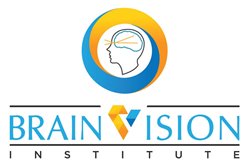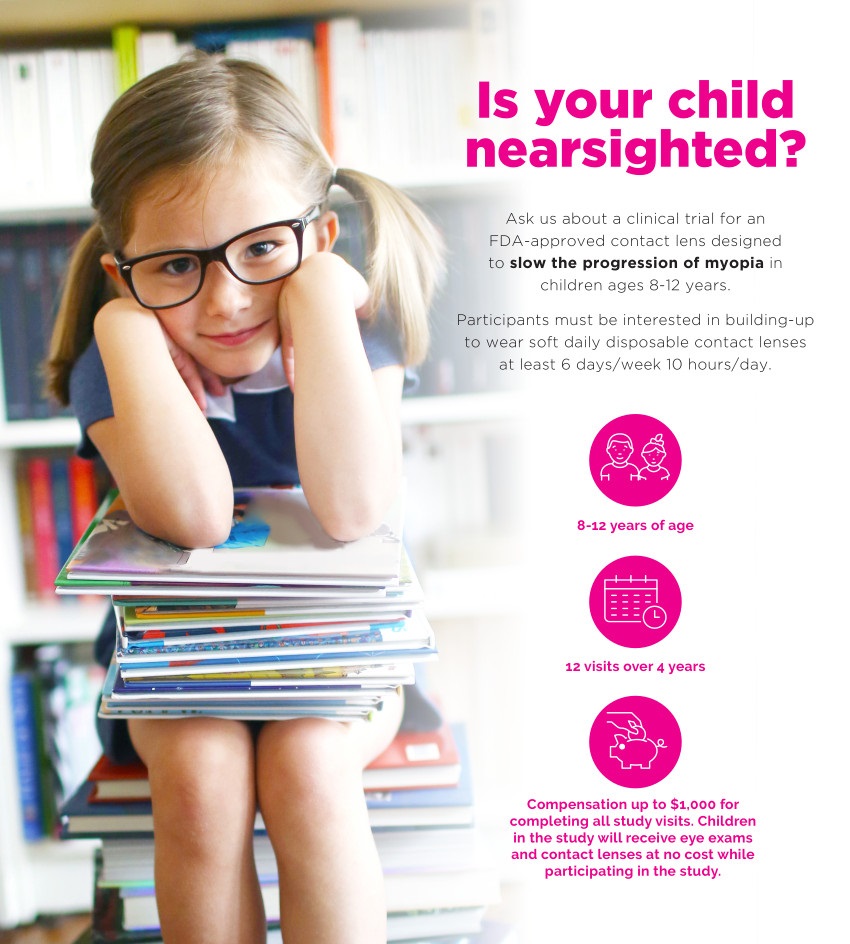RECRUITMENT UNDERWAY FOR NIH-SPONSORED STUDY
Eye care for children involves testing vision in the doctor’s office on a regular basis. Bringing children and teenagers to and from the doctor’s office can be challenging for many families. Most times, the parent and child need to take time off work and school. Families may have transportation issues because of access or cost or both. An app was recently developed to measure vision using an iPhone at home.
The Pediatric Eye Disease Investigator Group (PEDIG) has developed a study to see if testing vision at home using the app has similar results to testing vision in the office. The study is supported through funding from the National Eye Institute of the U.S. National Institutes of Health and is being coordinated by the Jaeb Center for Health Research in Tampa, Florida. About 525 children are expected to be enrolled.
You can view the study online here: https://public.jaeb.org/pedig/stdy/584
In general, to take part in this study, the child must:
- be between 3 and 17.5 years old
- be able to have their vision tested in the doctor’s office
- have access to an iPhone that works with the home vision testing app with them at the doctor’s visit
- be able to use the same iPhone to test vision at home
- be able to return to the doctor’s office about 3 months after the start of the study
Also, the child must not:
- have used eye drops to dilate their eyes within the last 30 days
- use eye drops to dilate their eyes during the study
- have had lens(es) in their eye(s) surgically removed and not replaced
- have any condition that would limit their ability to do the iPhone testing at home
How Can You Help?
- Your assistance is needed in referring children who may qualify.
- Referrals can be sent to the investigator listed below, or for more information, visit the PEDIG website at http://pedig.net/ or call the PEDIG Coordinating Center toll free at 1-888-797-3344
What is Visual Acuity Testing?
Visual Acuity is the clarity or sharpness of vision. It is normally tested using an eye chart in the doctor’s office to measure how well you can see at a distance.
Why are we doing this study?
The purpose of this study is to test whether vision can be accurately tested at home using an iPhone application. About 525 children at up to 15 doctor’s offices in the US will be in the study. The study will last about 3 months.
What is the Pediatric Eye Disease Investigator Group (PEDIG)?
The study is being conducted by the Pediatric Eye Disease Investigator Group (PEDIG). Your child’s eye doctor is a member of this group. The study will include about 525 children at pediatric eye centers across the United States. The Jaeb Center for Health Research is the coordinating center (data center) which is organizing the study. The National Eye Institute is providing the funding for the study.
What are the study procedures?
For all testing, your child will need to wear their glasses. Your child will not be able to wear contact lenses for testing during the study if they wear them. Your child will have their vision tested in both eyes and then retested in their worse seeing eye (study eye) by someone in the doctor’s office using a vision testing computer. This testing computer is how vision is usually tested in the doctor’s office. If your child’s vision was tested in both eyes before the study in the same way it will be tested for the study, the results from that test may be used to determine which eye is the study eye. If this happens, only one eye will be tested in the doctor’s office at this first visit. Your child will also have their study eye tested by someone in the doctor’s office using an iPhone. You will be shown how to test your child’s vision with the iPhone.
You will test your child’s vision in one eye using the iPhone before you leave the office. You will test your child’s vision at home with the iPhone. If your child wears contact lenses, they must remove their contact lenses for testing and wear their glasses. After testing, your child can wear their contacts again. A text will be sent to you to remind you when to test your child’s vision at home. You will test your child’s vision in both eyes twice 2 to 3 days after the office visit using the iPhone at home. You will then test your child’s vision in both eyes twice again at home 1 day later. If your child’s doctor has prescribed new glasses for them, they must not wear the new glasses until they have had their vision tested by you both 2 to 3 days after their office visit (first home test) and 1 day later (second home test).
Your child may start wearing their new glasses after the second home test.
Your child will have another doctor appointment within 3 months. Within 2 days before that appointment, you will test your child’s vision in both eyes twice using the iPhone at home. At the appointment, your child will have their vision in the study eye tested twice by someone in the doctor’s office using a vision testing computer. The study will end after your child’s vision is tested in the doctor’s office.
Each time your child’s vision is tested at home, a screenshot of the test results will be saved in the photo album on your iPhone. The screenshot will contain a 3-digit code that will be given to you and the day of the month that your child was born. This information will be used to link the test data to your child’s study information but cannot be used to identify your child outside of the study. A screen shot will be created each time the iPhone visual acuity application is run. After you are done with your child’s vision testing for the day, you will send the screen shots of the results using the testing app to a secure website at the Jaeb Center for Health Research.
What will we have to do if I agree to have my child participate in the study?
If you agree to have your child be a part of the study, you will be asked to test your child’s vision at home using the iPhone twice in both eyes 2-3 days after the office visit, at home 1 day later, and then again 2-3 days prior to the follow up visit. You will be asked to upload the results to a study website the same day you complete the test. You will also be asked to bring your child to one follow-up visit.
What costs will be my responsibility?
The study will pay for visits that are done just for the research study. You and your insurance company will not be responsible for the cost of visits done just for the research study. The study will not pay for usual care visits. Usual care visits are those that would occur even if your child were not in the study. The cost of usual care visits and any treatment prescribed will be your or your insurance company’s responsibility like it would be normally. The Visual Acuity App will be provided to you at no cost, but you may have some small data charges. To cover travel, time, and other visit-related expenses, you will be paid $50 for the initial office visit and $50 for the follow up office visit. You will also be paid $20 for each of the three home tests, once results are uploaded to the study website. Payments are made via gift card. Participating families may receive up to a maximum of $160 worth of gift cards. X06_Parent_Information_Brochure 1-25-22 v2.0
Why should I volunteer to have my child take part in the study?
You and your child will be part of a research study designed to provide help to lower the number of times other children with eye conditions will need to visit the doctor in the future. Although the results may not be of direct benefit to your child, they are expected to benefit other children and families.
What do I need to do to have my child take part in the study?
You will be told if your child is eligible for the study. If you want your child to be in the study, you will be asked to sign a form (Informed Consent Form) giving your permission. This form will provide you with more details about the study. Coordinating Center: Jaeb Center for Health Research Tampa, FL Phone: 888-797-3344 Email: pedig@jaeb.org


*Open Saturday by appointment only.